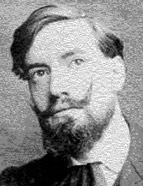

In January/February 1919 the Republic was saved. Having stamped out the Sidonistas [Sidónio’s followers] and monarchist leaders – who had been protected under Sidónio - Jaime Cortesão replaced Fidelino de Figueiredo as director of the Biblioteca Nacional de Lisboa [Lisbon National Library]. This appointment was accompanied by a reform of the institution, which brought the provision of staff and a solid organisation ("Relatório do Director da Biblioteca Nacional” [“Report of the Director of the National Library"], in Anais das Bibliotecas e Arquivos [Annals of the Libraries and Archives]. Lisbon: July-September 1920).
As a consequence of his reinvigorated motivation for political action - fuelled by war and prison – Cortesão abandoned the Democratic Party to join old friends and others who, equally disillusioned, were seeking new paths, until they gathered at the Seara Nova in 1921. The fight at this stage was not so much through popular education but rather by remodelling the Elites in order to guide the People. As may be deduced from his work, this resulted in a highly vague definition of social groups which would later be detected in the historian. He was particularly concerned with the Elites and the People. A group of exceptional personalities from the Biblioteca Nacional such as Raul Proença, António Sérgio, Aquilino Ribeiro, Faria de Vasconcelos and others, joined forces to launch remarkable initiatives in publishing and safeguarding the cultural heritage. An exemplary deed. But the Library represented research; it represented contact with the fundamental works of culture. And it was in this environment of study and reflection that he would become a historian.
Jaime Cortesão - a doctor by training, politician by civic obligation and director of the Biblioteca Nacional de Lisboa - would finally unveil himself as a historian in 1922, at the age of 38 - a correspondent member of the Academia de Ciências de Lisboa [Academy of Sciences of Lisbon] since 1921, of which he would never become full member. It was in the História da Colonização Portuguesa do Brasil [History of the Portuguese Colonisation of Brazil], directed by Carlos Malheiro Dias with the energetic administrative direction of the "Brazilian" Albino de Souza Cruz. His collaboration, which emerged independently in the same year, was entitled A expedição de Pedro Álvares e o descobrimento do Brasil [The Expedition of Pedro Álvares Cabral and the discovery of Brazil]. The three initial chapters and the conclusion may be said to be part of the genre of a theatrically revived history, with detailed descriptions and the gestures and alleged thoughts of the characters. Despite the footnotes attesting to the careful consultation of sources, they were no more than a pastiche of dubious literary taste. Cortesão allowed himself to be dragged along by his verbal impetuosity to the meticulous and elaborate description, seeking the visualisation of everything. However, it was only with chapter IV of A Expedição that the scholar surfaced.
